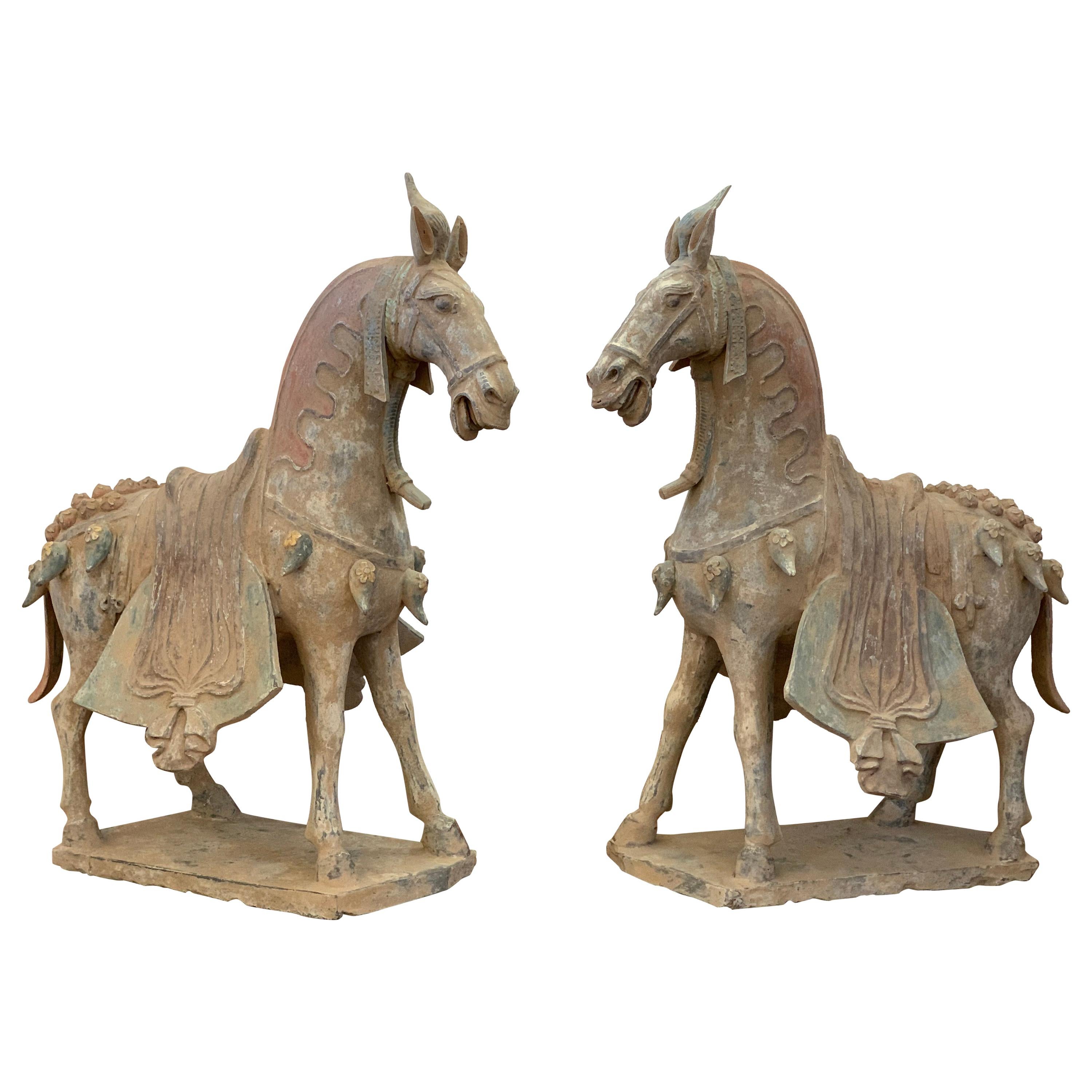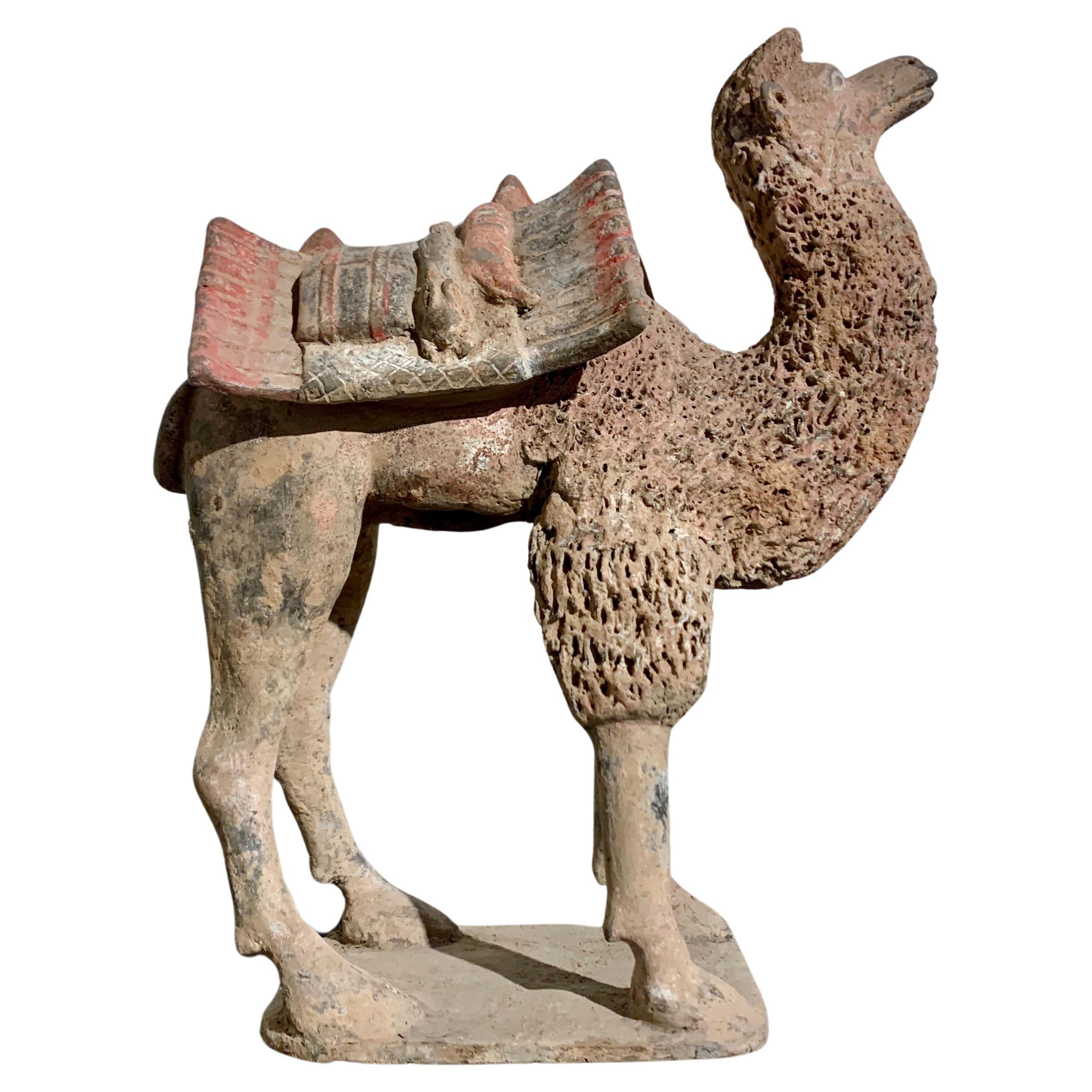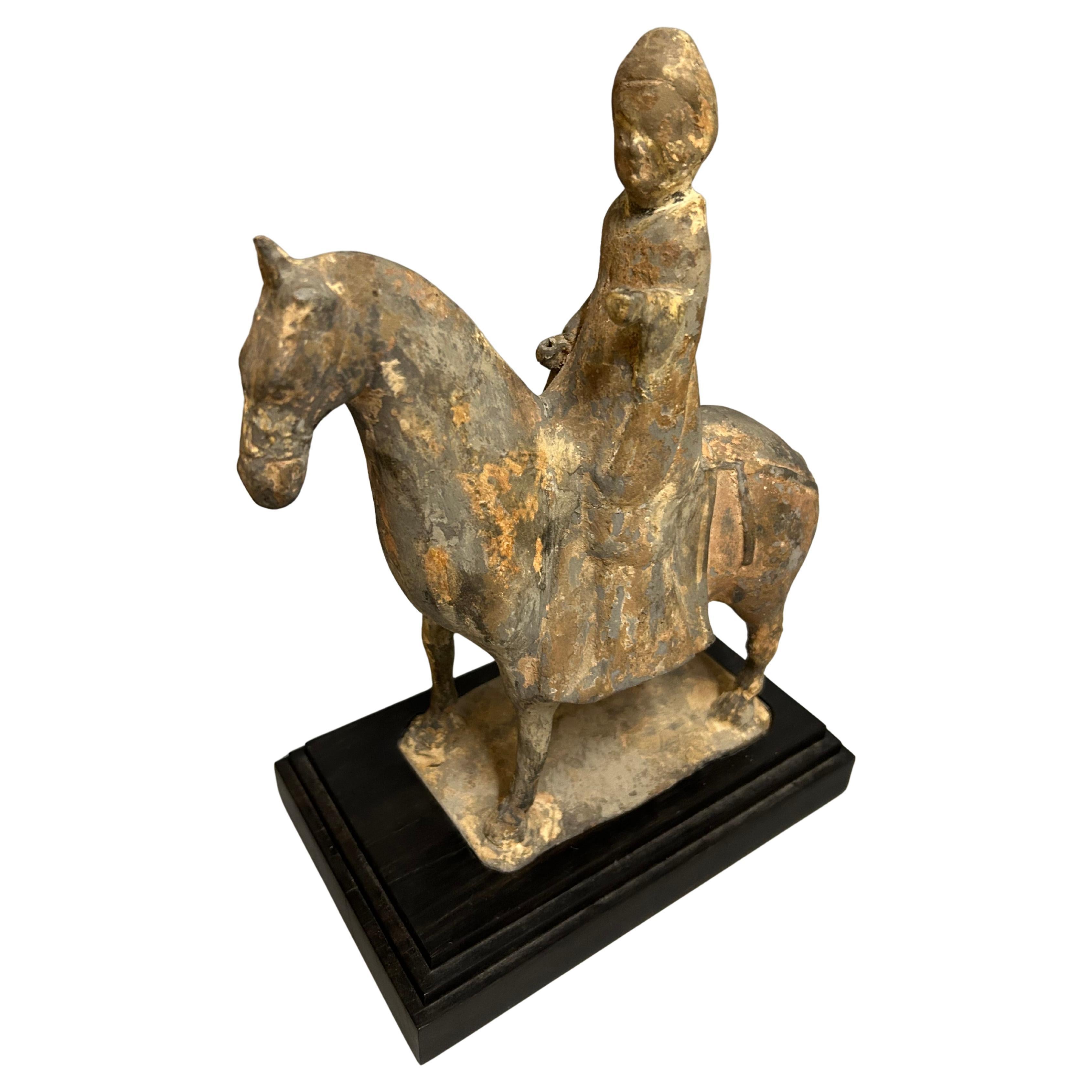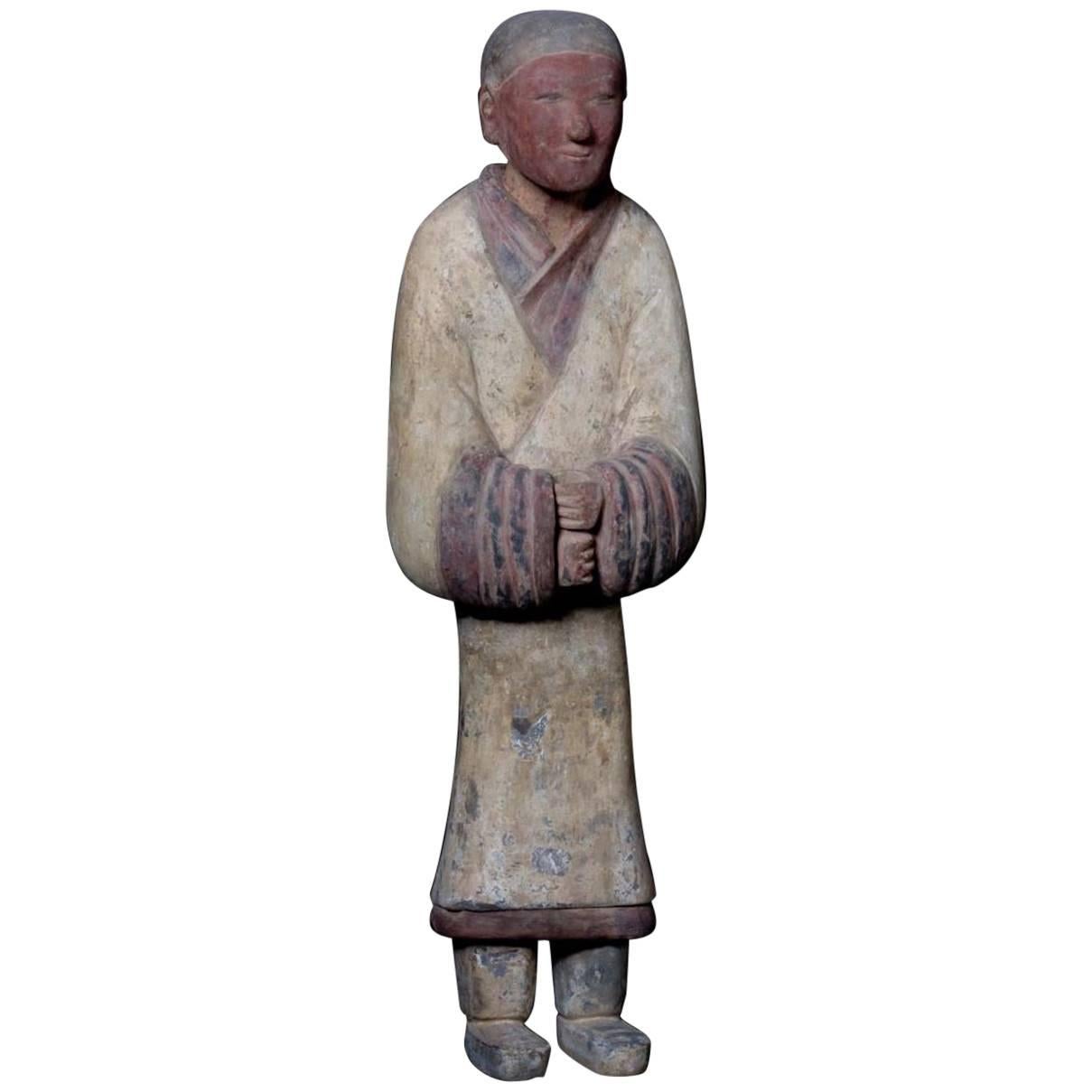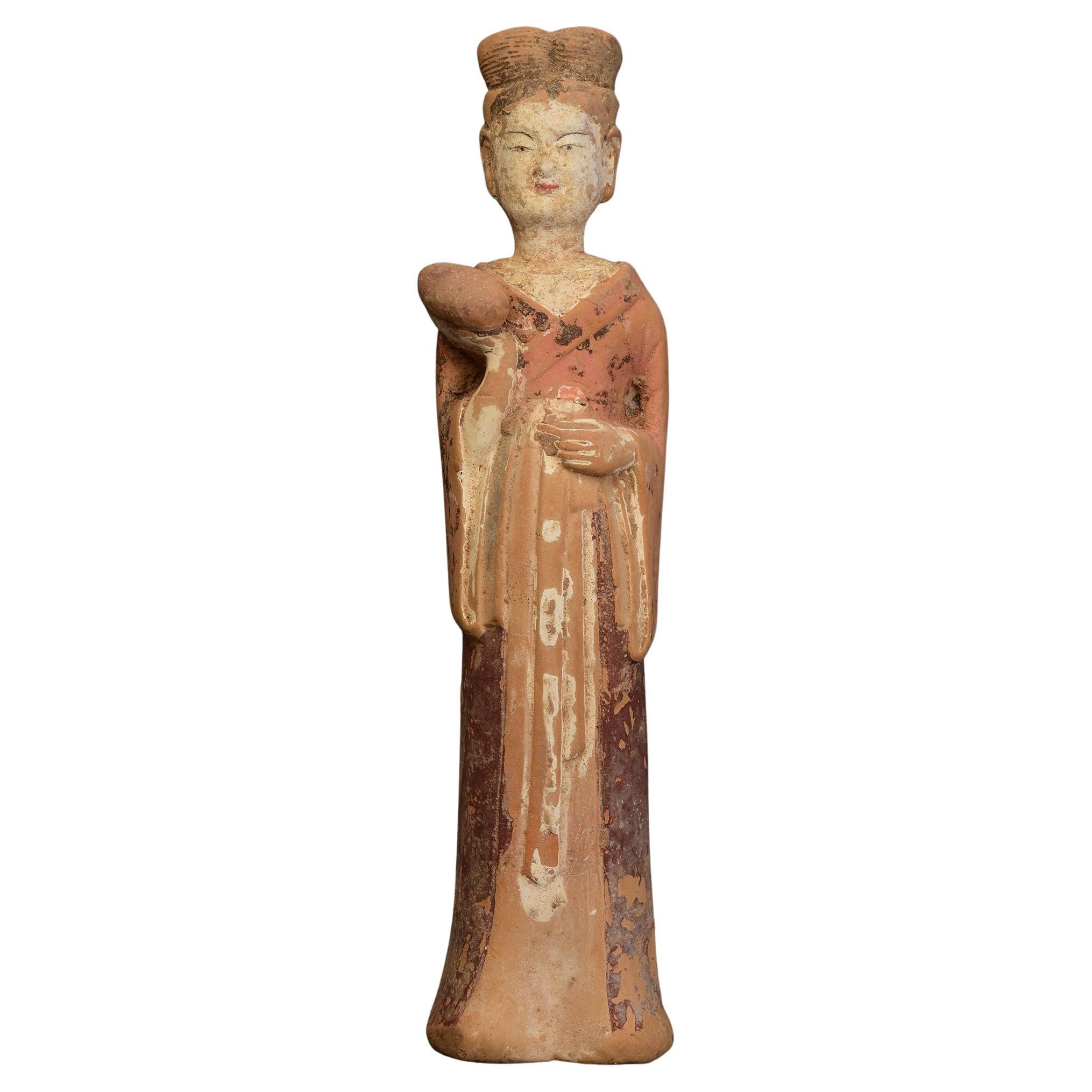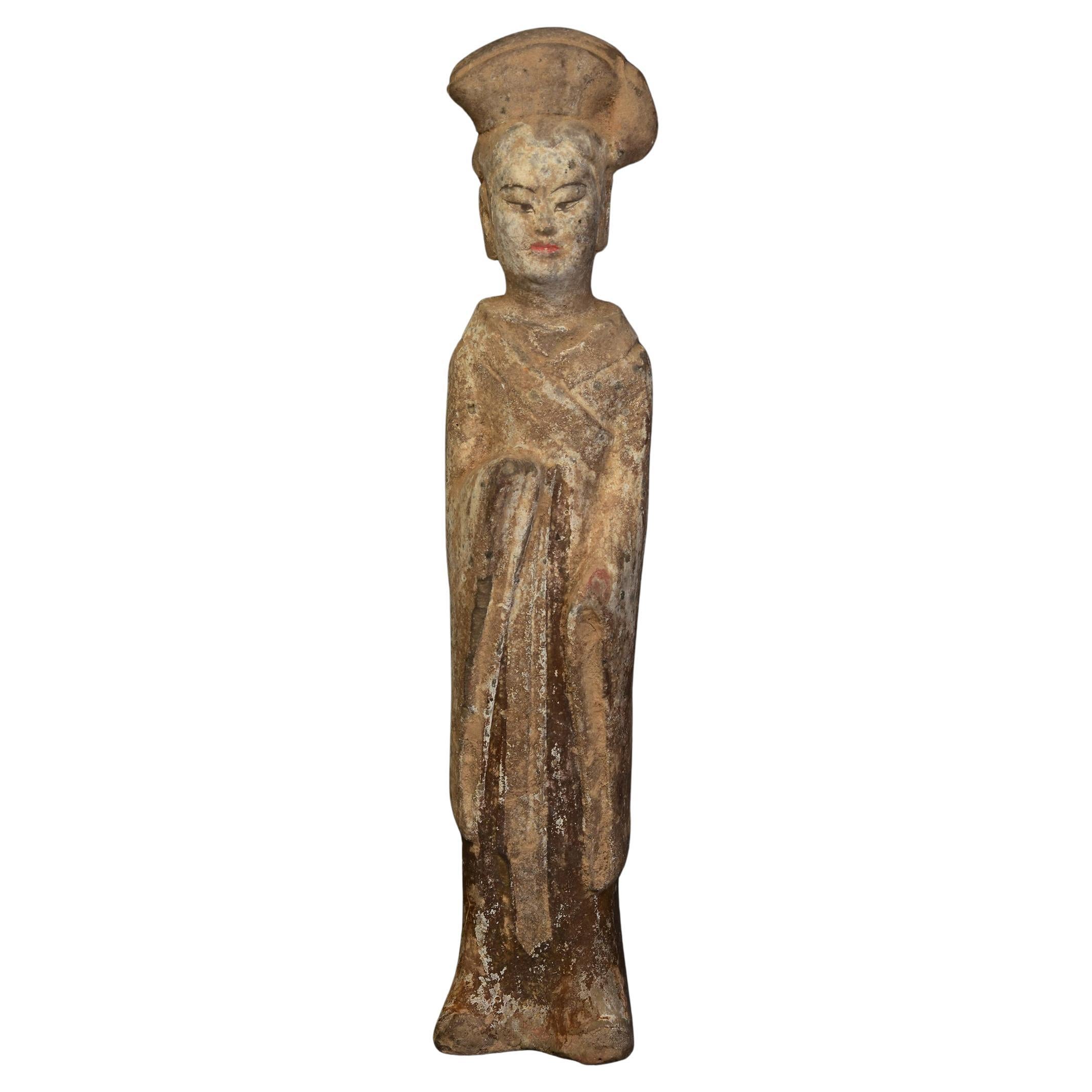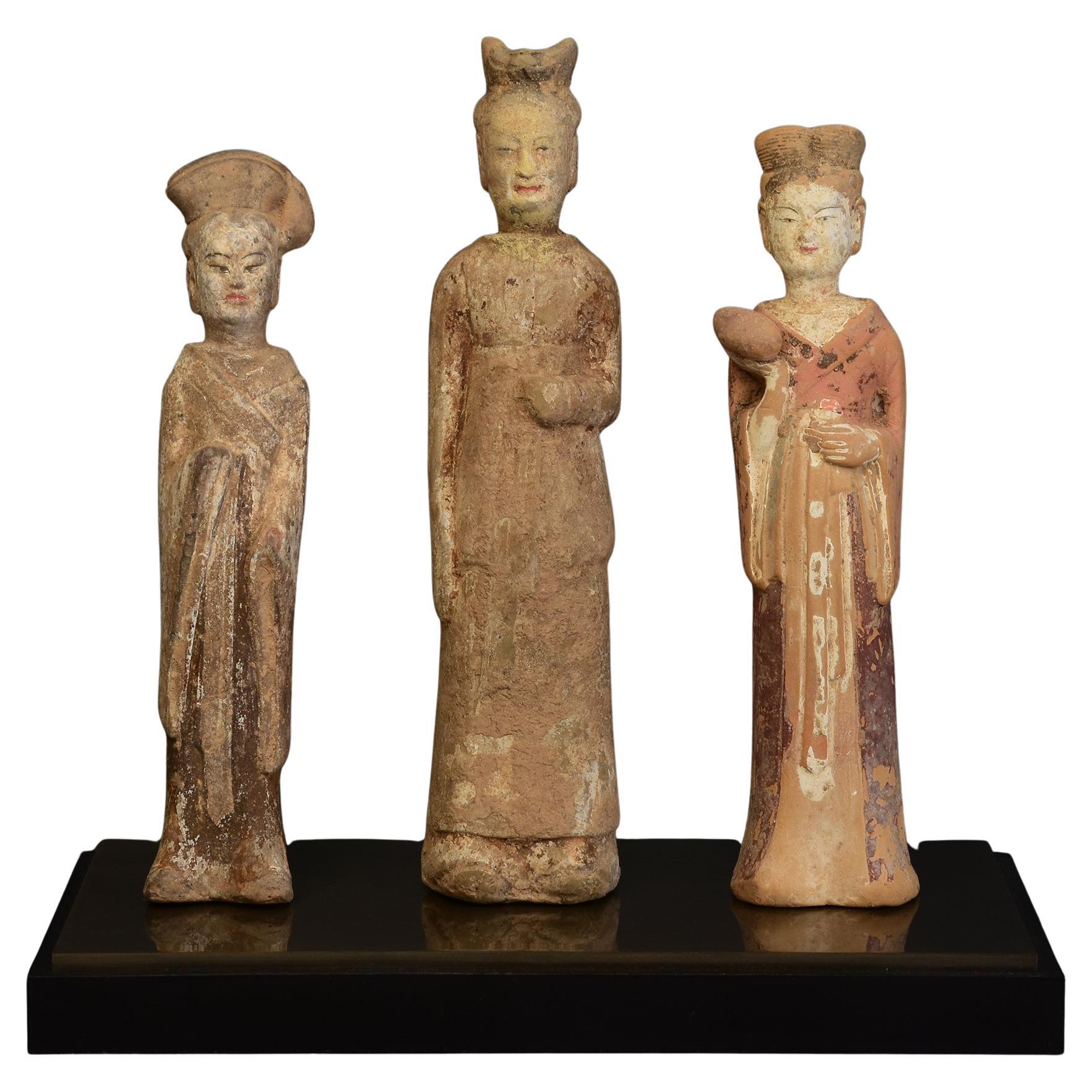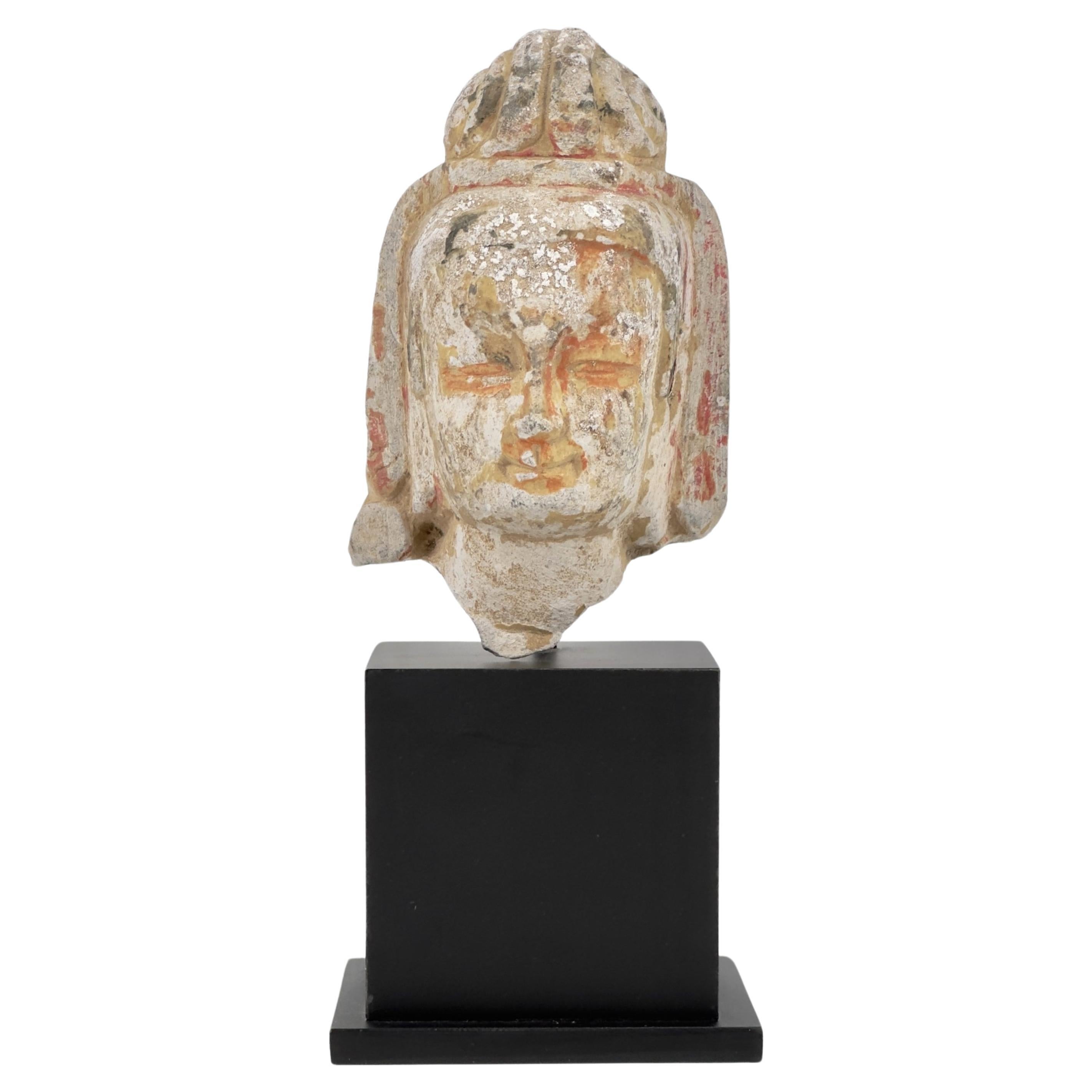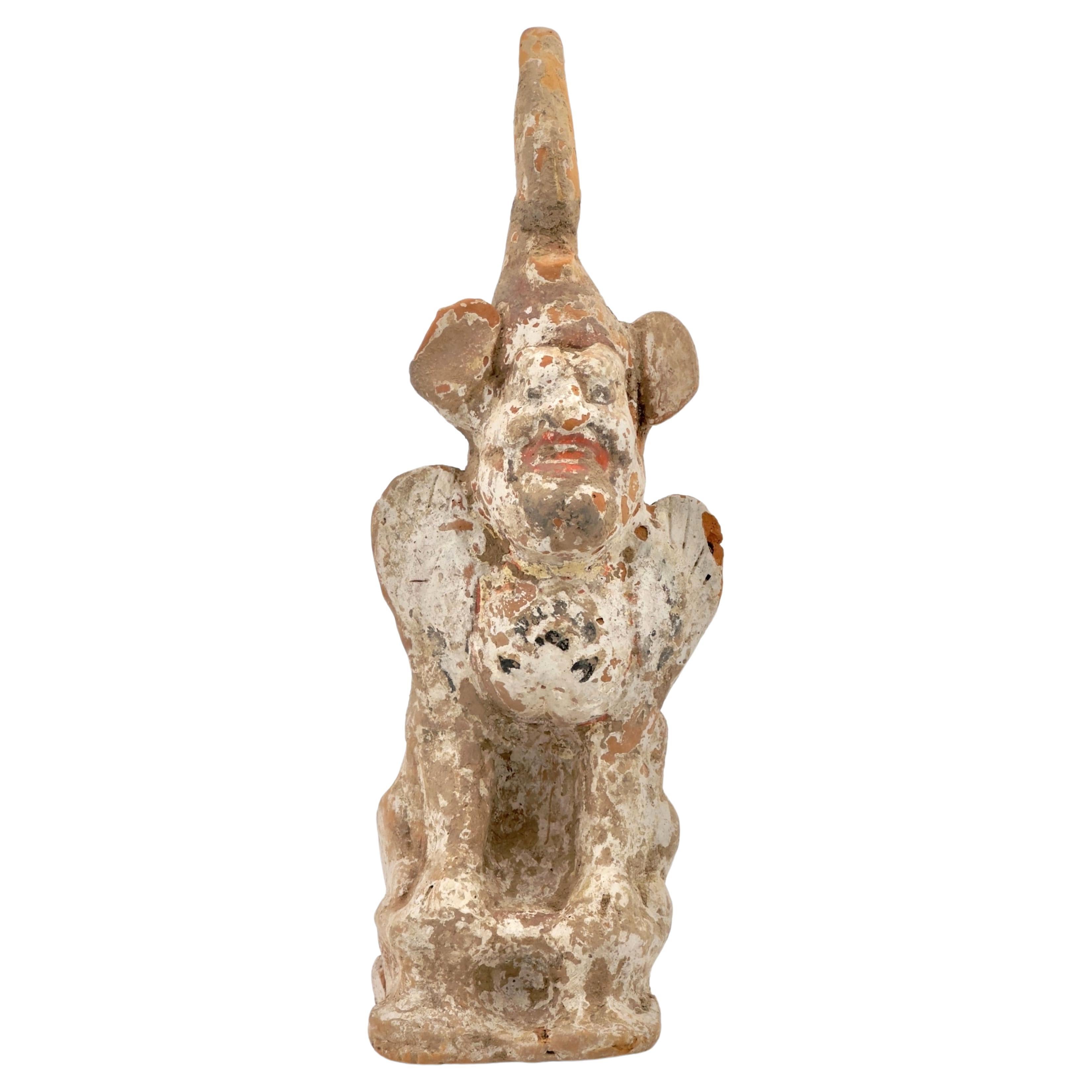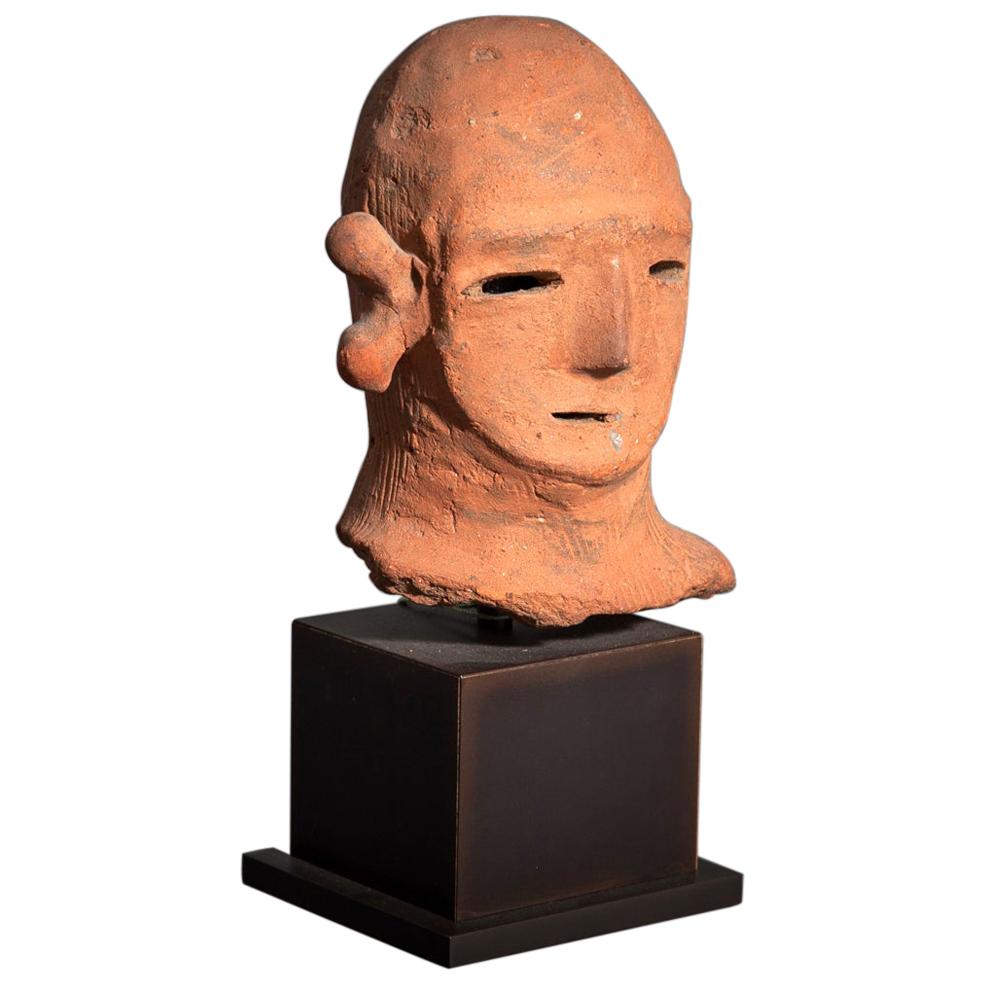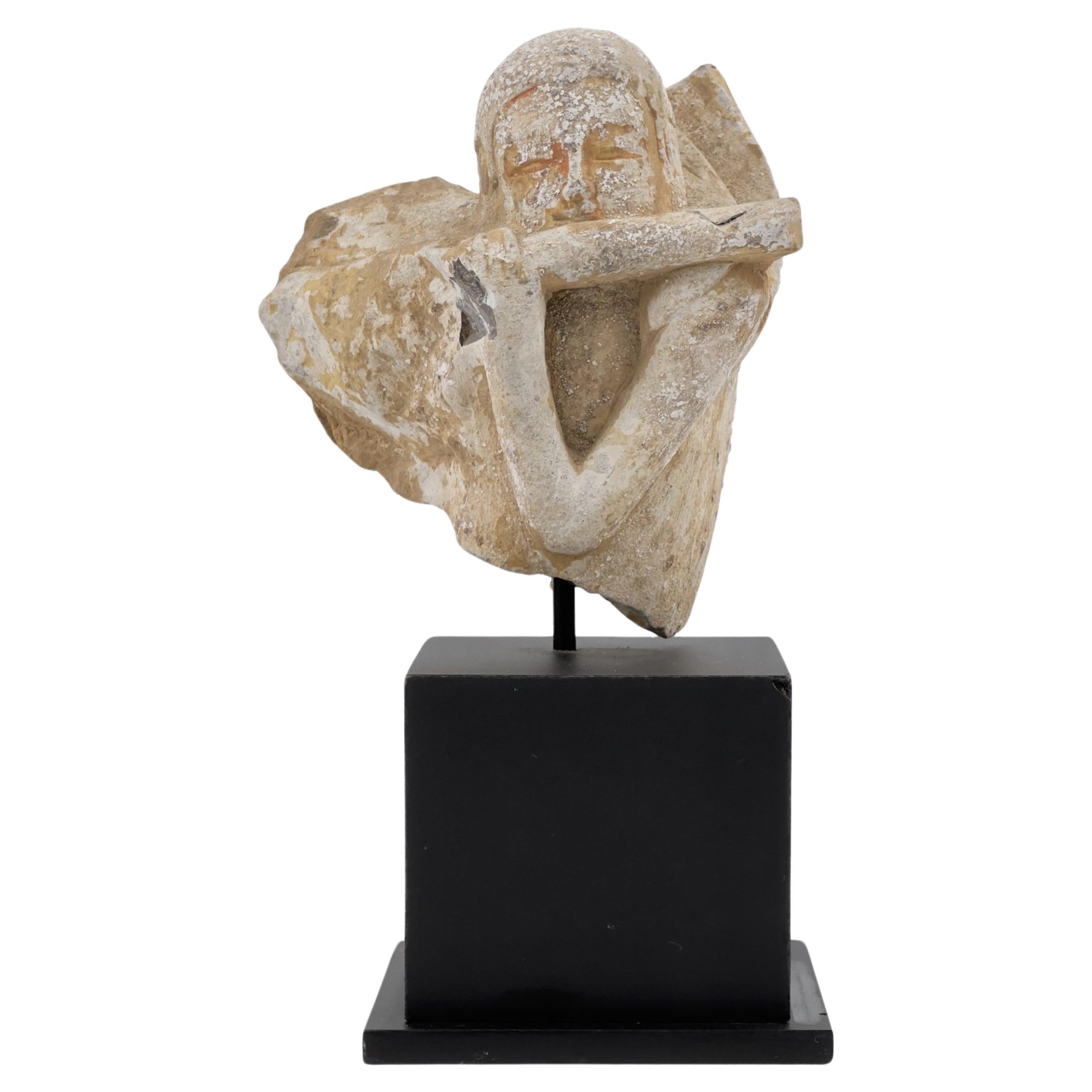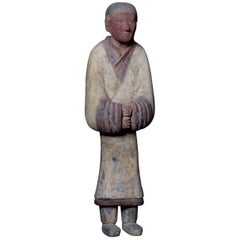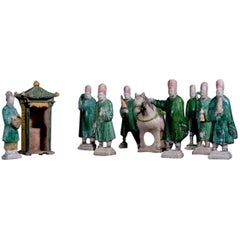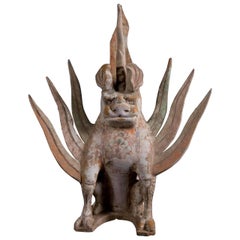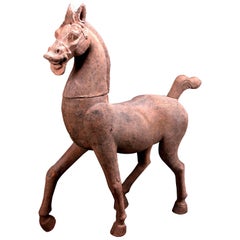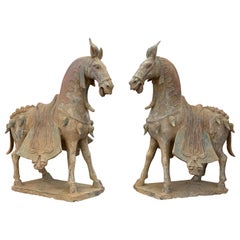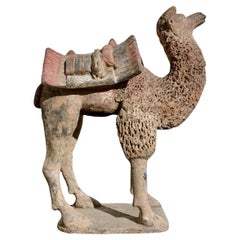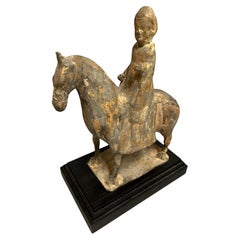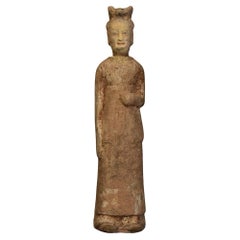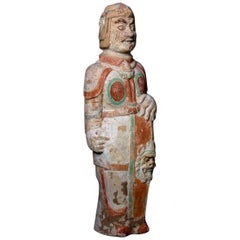
Terracotta Warrior with Shield - Northern Wei Dynasty, China '386-557 AD'
View Similar Items
Want more images or videos?
Request additional images or videos from the seller
1 of 12
Terracotta Warrior with Shield - Northern Wei Dynasty, China '386-557 AD'
$6,875List Price
About the Item
- Dimensions:Height: 18 in (45.72 cm)Width: 4.5 in (11.43 cm)Length: 18 in (45.72 cm)
- Materials and Techniques:
- Place of Origin:
- Period:
- Date of Manufacture:386-557 AD
- Condition:Wear consistent with age and use.
- Seller Location:San Pedro Garza Garcia, MX
- Reference Number:Seller: CH-0091stDibs: LU3172310923413
About the Seller
3.7
Vetted Professional Seller
Every seller passes strict standards for authenticity and reliability
1stDibs seller since 2017
24 sales on 1stDibs
Typical response time: 1 to 2 days
Authenticity Guarantee
In the unlikely event there’s an issue with an item’s authenticity, contact us within 1 year for a full refund. DetailsMoney-Back Guarantee
If your item is not as described, is damaged in transit, or does not arrive, contact us within 7 days for a full refund. Details24-Hour Cancellation
You have a 24-hour grace period in which to reconsider your purchase, with no questions asked.Vetted Professional Sellers
Our world-class sellers must adhere to strict standards for service and quality, maintaining the integrity of our listings.Price-Match Guarantee
If you find that a seller listed the same item for a lower price elsewhere, we’ll match it.Trusted Global Delivery
Our best-in-class carrier network provides specialized shipping options worldwide, including custom delivery.More From This Seller
View AllElegant Han Dynasty Terracotta Warrior - China '206 BC - 220 AD'
Located in San Pedro Garza Garcia, Nuevo Leon
Impressive terracotta warrior representing a banner bearer gripping a wooden staff with his hands (dematerialized through the ages); his gaze is ser...
Category
Antique 15th Century and Earlier Chinese Han Antiquities
Materials
Terracotta
Impressive Terracotta Funerary Procession - Ming Dynasty, China '1368-1644 AD'
Located in San Pedro Garza Garcia, Nuevo Leon
Impressive Funeral Ensamble of 10 Terracotta Glazed Figures in green and caramel colors depicting a votive procession with a palanquin, his four carriers, a horse, a stableman, two musicians, and an offering carrier.
This ensemble is accompanied by a Certificate of Authenticity, and Certificate of Expertise by Jean-Yves Nathan - Specialist in Asian Arts for the CEDEA (The European Confederation of Art Experts).
Burial figurines of graceful dancers, mystical beasts, and everyday objects reveal both how people in early China approached death and how they lived. Since people viewed the afterlife as an extension of worldly life, these figurines, called mingqi, sometimes referred as “spirit utensils” or “vessels of ghosts” disclose details of routine existence and provide insights into belief systems over a thousand-year period.
The Ming dynasty was the ruling dynasty of China – then known as the Empire of the Great Ming – for 276 years (1368–1644 AD). Founded by Chu Yuan-chang, the rebel leader that was successful in removing the mongols from the throne. Chinese control was re-asserted in China and eastern Asia. Literature became more important, schools were created, and the justice system was reformed. The Ming dynasty is described by some as "one of the greatest eras of orderly government and social stability in human history,” was the last imperial dynasty in China ruled by ethnic Han Chinese.
The practice of burying ceramic objects with the deceased went into decline from the 10th to the 14th Century AD. There was a revival in placing miniature representations of glazed terracotta objects such a furniture, food offerings, horses, miniature statues...
Category
Antique 15th Century and Earlier Chinese Ming Antiquities
Materials
Terracotta
Chimera (Pixiu) Terracotta Mythological Being - Tang Dynasty, China '618-907 AD'
Located in San Pedro Garza Garcia, Nuevo Leon
Magnificent Mythological Being "Chimera" with Human Face and Flaming Rays Halo. Orange Terracotta with Traces of Stucco and Painting.
This creature is commonly known as Pixiu. Fierc...
Category
Antique 15th Century and Earlier Chinese Tang Antiquities
Materials
Terracotta
Monumental Han Dynasty Terracotta Horse - TL Tested - China, '206 BC–220 AD'
Located in San Pedro Garza Garcia, Nuevo Leon
A massive pottery horse with separately made head and tail, standing on all fours and striding with its right hoof forward. Extended snout ends in parted lips showing teeth beneath i...
Category
Antique 15th Century and Earlier Chinese Han Antiquities
Materials
Terracotta
Stunning Terracotta Standing Horse, Tang Dynasty, China '618-907 AD', TL Test
Located in San Pedro Garza Garcia, Nuevo Leon
Magnificent standing horse in orange terracotta and traces of painting. With a finely decorated saddle and with the mane and tail hair braided. TL Test by Ralph Kotalla Lab NE: 09K12...
Category
Antique 15th Century and Earlier Chinese Tang Antiquities
Materials
Terracotta
6 Elegant Ming Dynasty Court Attendants in Glazed Terracotta, China 1368-1644 AD
Located in San Pedro Garza Garcia, Nuevo Leon
A fine set of a six court attendants as in the Forbidden City of Beijing, elegantly dressed in a Green & Red Daopao – a traditional men’s formal attire from the Ming Dynasty dated 1368-1643 A.D. – with glazed robes and Red Pigment remains in their hat and belts. They stand in an honorary posture atop a red plinth, some with orifices in their hands, where spirit objects were placed to comfort or satisfy the deceased. The heads are detachable, as often seen on the larger figures from this period.
They are accompanied by a Certificate of Authenticity, and Certificate of Expertise by Jean-Yves Nathan - a leading authority specialized in Far East Archaeology from the CEDEA (The European Confederation of Art Experts).
Burial figurines of graceful dancers, mystical beasts, and everyday objects reveal both how people in early China approached death and how they lived. Since people viewed the afterlife as an extension of worldly life, these figurines, called mingqi, sometimes referred as “spirit utensils” or “vessels of ghosts” disclose details of routine existence and provide insights into belief systems over a thousand-year period.
The Ming dynasty was the ruling dynasty of China – then known as the Empire of the Great Ming – for 276 years (1368–1644 AD). Founded by Chu Yuan-chang, the rebel leader that was successful in removing the mongols from the throne. Chinese control was re-asserted in China and eastern Asia. Literature became more important, schools were created, and the justice system was reformed. The Ming dynasty is described by some as "one of the greatest eras of orderly government and social stability in human history,” was the last imperial dynasty in China ruled by ethnic Han Chinese.
The practice of burying ceramic objects with the deceased went into decline from the 10th to the 14th Century AD. There was a revival in placing miniature representations of glazed terracotta objects such a furniture, food offerings, horses, miniature statues...
Category
Antique 15th Century and Earlier Chinese Ming Antiquities
Materials
Terracotta
You May Also Like
Northern Wei Dynasty Terracotta Horses, TL Tested, '386 AD-535 AD'
Located in Miami, FL
A massive pottery pair of horses standing on all fours and striding with its right hoof forward. Extended snout ends in parted lips showing teeth beneath in a braying attitude. Low relief bridle on face and well defined eyes. Raised mane down back of the neck
A fantastic example of the Wei dynasty horses.
Large, exquisite walking Ferghana horses with great attention paid to anatomical detail were the choice of the wealthy. The horse was second only in importance to the dragon. It was supposed to possess magical powers which the early Chinese were eager to explore. It would be the horse that would carry the deceased to the next life and it would be the amount of horses that an individual owned that would guarantee his ongoing status in the hereafter.
Thermoluminescence certificate from Madrid Labs included.
In southern China, people turned to Daoism, and mingqi, as well as above-ground sculptures, became ever more infused with animal iconography and energized with dynamic lines.
The north of China was eventually united by nomadic Tuoba invaders who founded the Northern Wei dynasty...
Category
Antique 15th Century and Earlier Chinese Han Antiquities
Materials
Terracotta
Chinese Pottery Camel, Northern Wei Dynasty (386 - 535 AD), China, TL Tested
Located in Austin, TX
A delightful and rare Chinese painted high fired gray pottery model of a wooly camel, Northern Wei Dynasty (386 - 535 AD), China, with TL test.
The charming camel is portrayed stand...
Category
Antique 15th Century and Earlier Chinese Antiquities
Materials
Pottery
Chinese pottery horse with rider, Northern Wei Dynasty
Located in New York, NY
on fitted wooden base (base is included with this item); 3in(D) x 8in(W) x 9.5in(H) are the dimensions of the pottery piece only (not including the wooden base); provenance: collecti...
Category
Antique 15th Century and Earlier Chinese Antiquities
Materials
Pottery
Northern Wei Dynasty, Antique Chinese Painted Pottery Standing Court Lady
Located in Sampantawong, TH
Antique Chinese painted pottery standing court lady, with original pigments remaining.
Age: China, Northern Wei Dynasty, A.D. 386 - 535
Size: Height 22.2 C.M. / Width 5.2 C.M. / Dep...
Category
Antique 15th Century and Earlier Chinese Antiquities
Materials
Pottery
Northern Wei Dynasty, Antique Chinese Painted Pottery Standing Court Lady
Located in Sampantawong, TH
Antique Chinese painted pottery standing court lady, with original pigments remaining.
Age: China, Northern Wei Dynasty, A.D. 386 - 535
Size: Height 20.4 C.M. / Width 5 C.M. / Depth...
Category
Antique 15th Century and Earlier Chinese Antiquities
Materials
Pottery
Northern Wei Dynasty, Antique Chinese Painted Pottery Standing Court Lady
Located in Sampantawong, TH
Antique Chinese painted pottery standing court lady, with original pigments remaining.
Age: China, Northern Wei Dynasty, A.D. 386 - 535
Size: Height 19.5 C.M. / Width 4 C.M. / Depth...
Category
Antique 15th Century and Earlier Chinese Antiquities
Materials
Pottery
Recently Viewed
View AllMore Ways To Browse
Chinese Funerary
Terracotta Figurines
Chinese Terracotta Figures
Terracotta Warrior
Antique Dao
Tomb Guardians
Antique Passport
Antique Passports
Han Warrior
Wei Dynasty
Chinese Helmet
Chinese Terracotta Warriors
Chinese Warrior Painting
Northern Wei
Han Dynasty Dancer
Northern Wei Dynasty
Funerary Mask
Rare Antiquities
